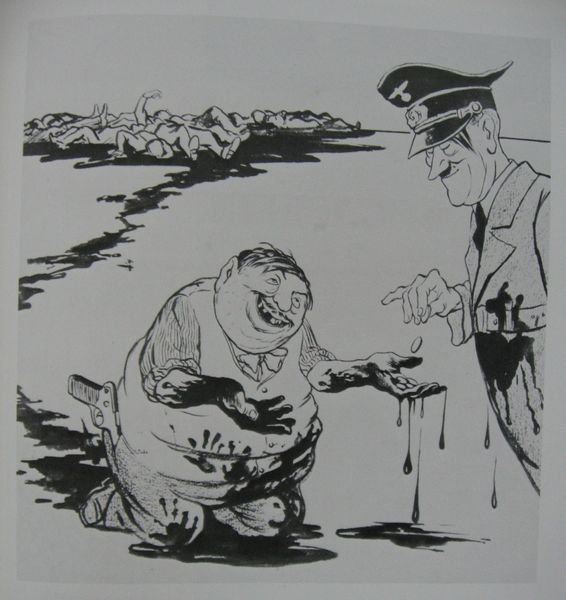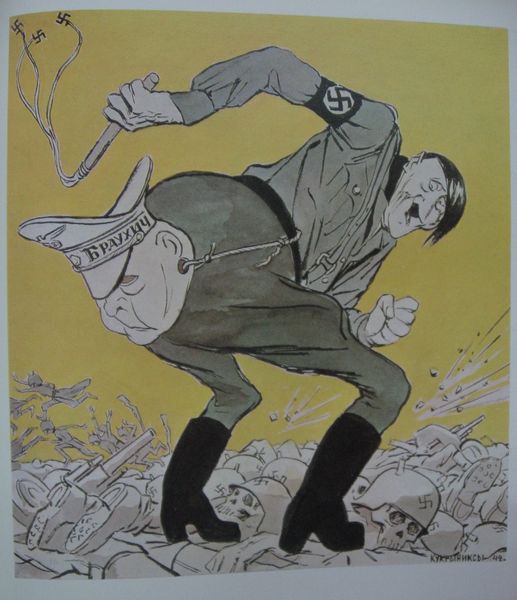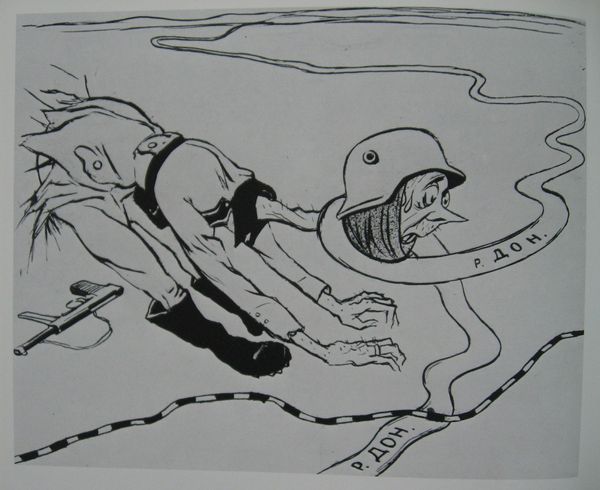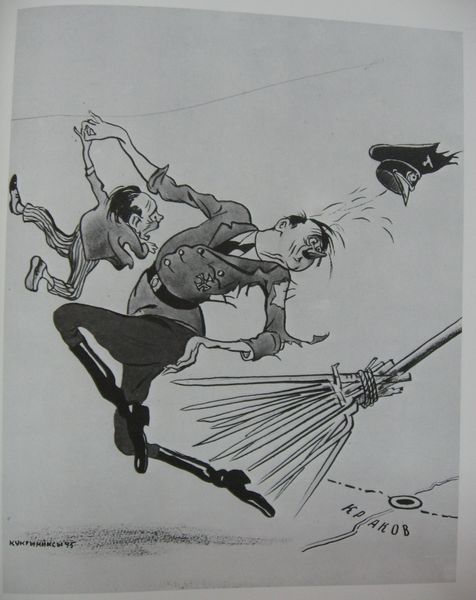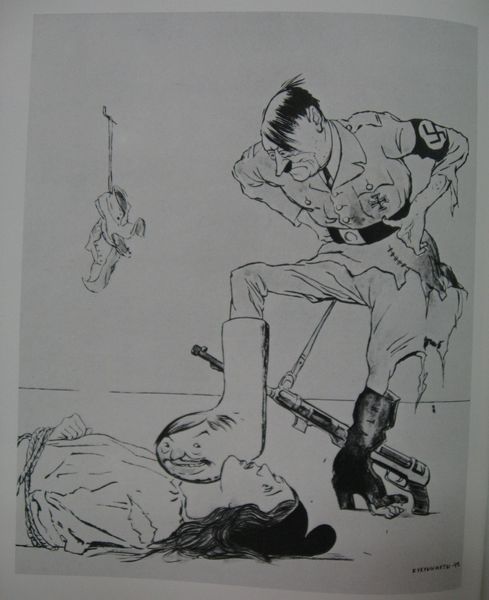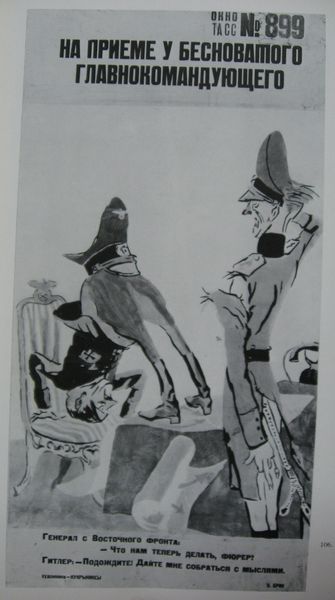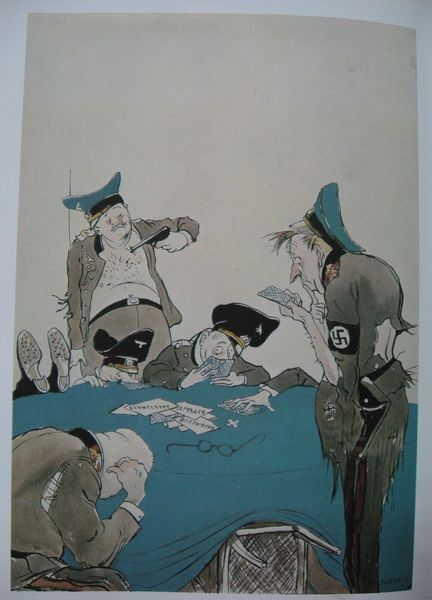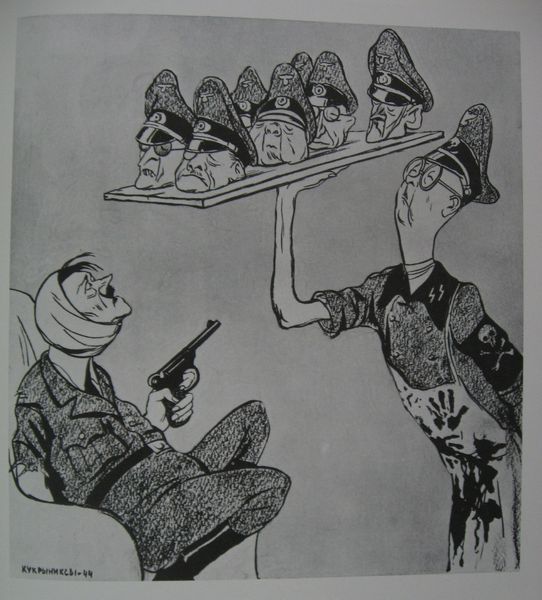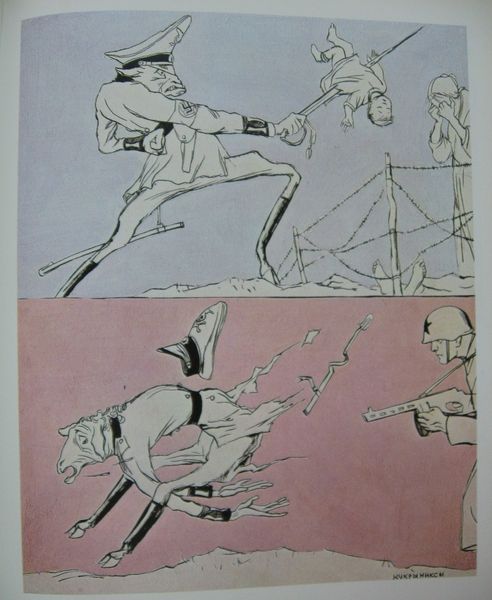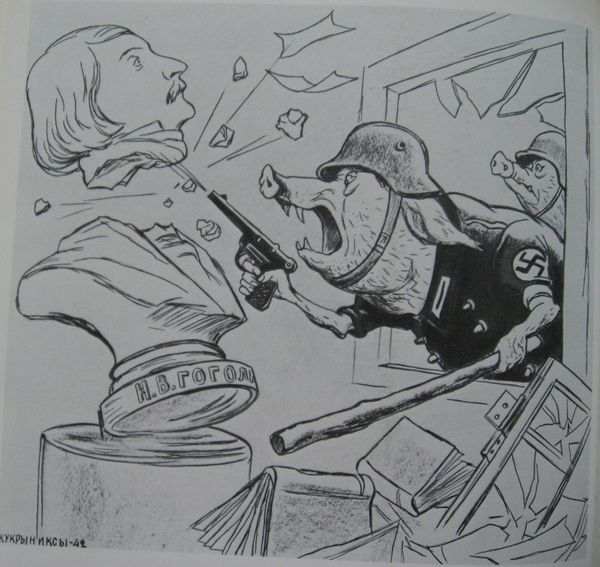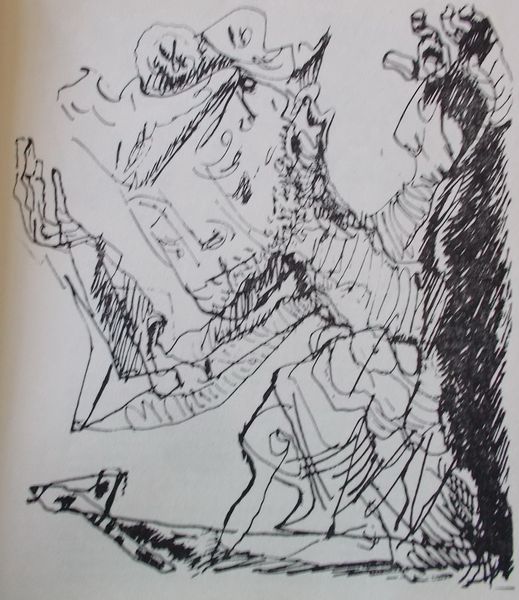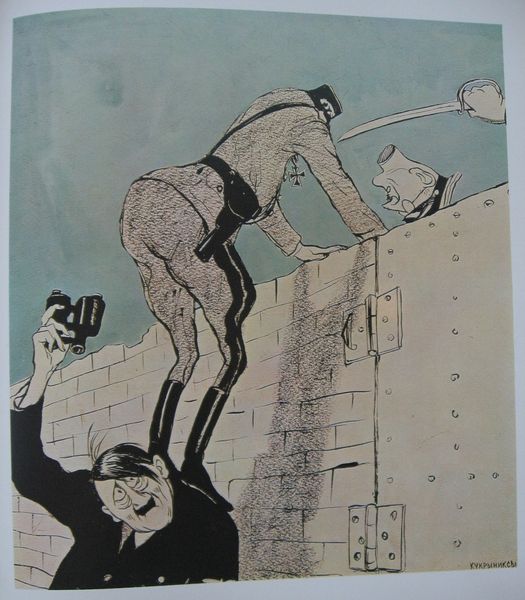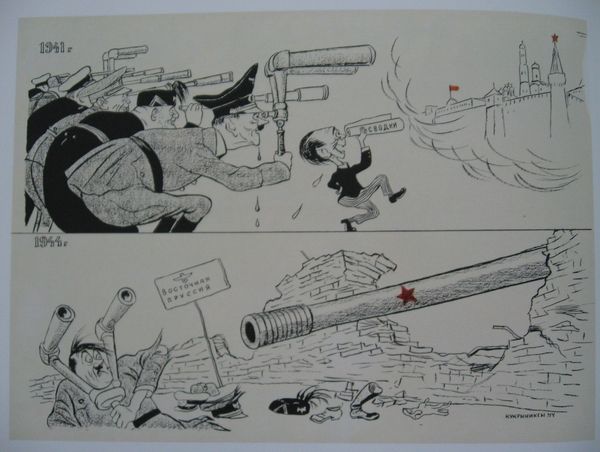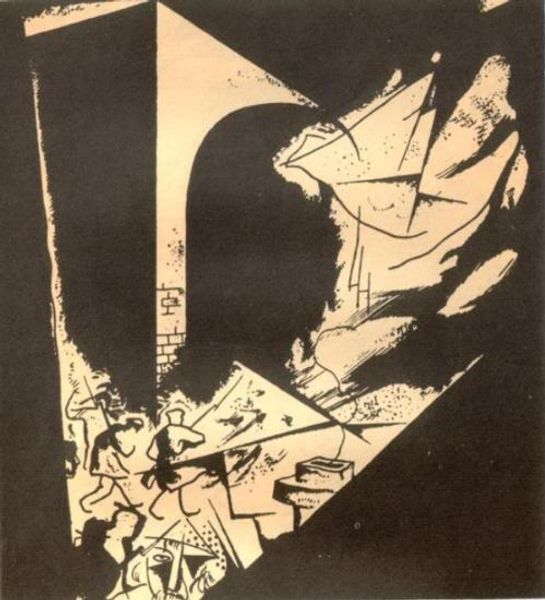
drawing, ink, pen
#
drawing
#
quirky illustration
#
ink drawing
#
narrative-art
#
pen illustration
#
caricature
#
war
#
junji ito style
#
cartoon sketch
#
social-realism
#
ink
#
famous-people
#
sketchwork
#
ink drawing experimentation
#
pen-ink sketch
#
sketchbook drawing
#
pen
#
sketchbook art
#
modernism
Copyright: Kukryniksy,Fair Use
Editor: This ink drawing, "Untitled," created in 1943 by the Kukryniksy collective, has such a forceful, almost manic energy. What's striking is the exaggeration of Hitler’s figure juxtaposed with the looming clamp adorned with Allied flags. How do you interpret this work? Curator: This drawing encapsulates the potent role of art as a weapon of resistance and propaganda during World War II. Notice how the artists use caricature not merely for humor, but to dismantle and delegitimize the figure of Hitler. His exaggerated features become symbolic of a crumbling ideology. Who is holding the clamp? What does this imply in terms of political power? Editor: The clamp seems to represent the Allied forces – the British and American flags are visible. So, the artwork portrays them clamping down on…something Hitler is desperately trying to hold onto? Curator: Precisely! It's a visual metaphor for the Allied effort to seize territories controlled by the Axis powers, specifically, given that this was created in 1943, amidst critical turning points on the Eastern Front. Given that context, let’s analyze what he is desperately trying to hold: What does that landmass represent, considering the inscription upon it? What is its historical significance, and why would the artists choose to depict this particular struggle? Editor: The inscription is in what seems to be Cyrillic: it may say Italy! So, it seems as though the drawing symbolizes the allies' fight to free Italy from Axis control. That makes so much sense in relation to its historical context! Curator: Exactly. The Kukryniksy collective employed art as an accessible tool, aligning with social realist aesthetics. Considering its historical and political context, what might be the implications of representing war with what appears to be humor? Is it meant to trivialize such an intense and tragic event? Editor: Perhaps, but its intention goes deeper: maybe ridicule aims at stripping the enemy of power and generating hope by creating the conviction of ultimate victory. Thank you for making me think about the war from a Social Realist and activist angle. Curator: It has been a very fruitful discussion.
Comments
No comments
Be the first to comment and join the conversation on the ultimate creative platform.
